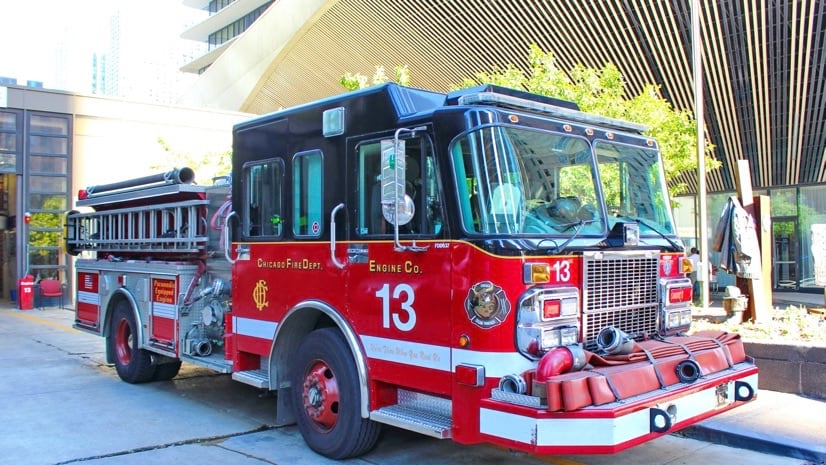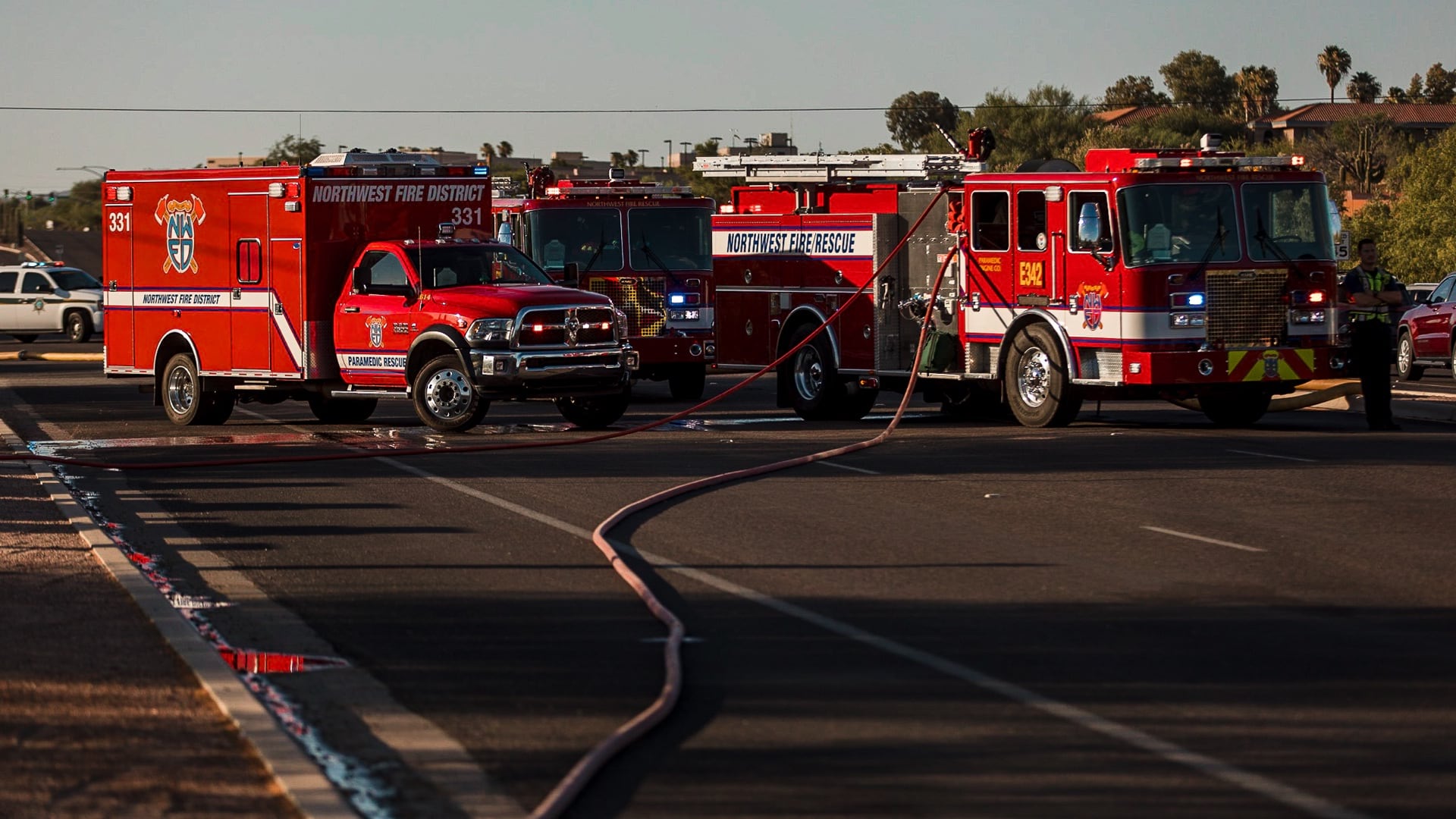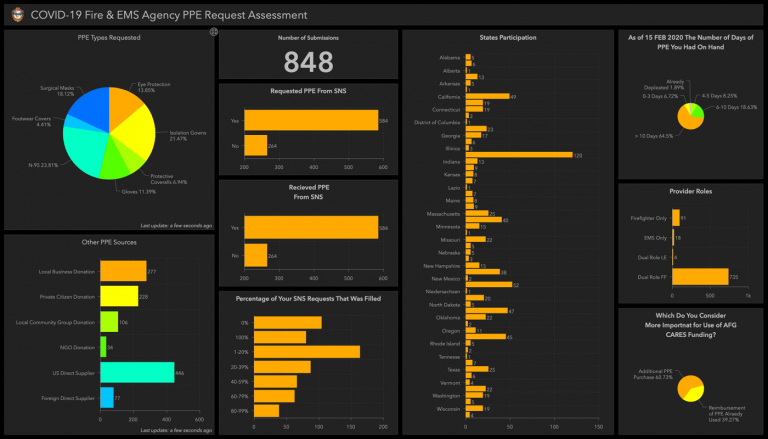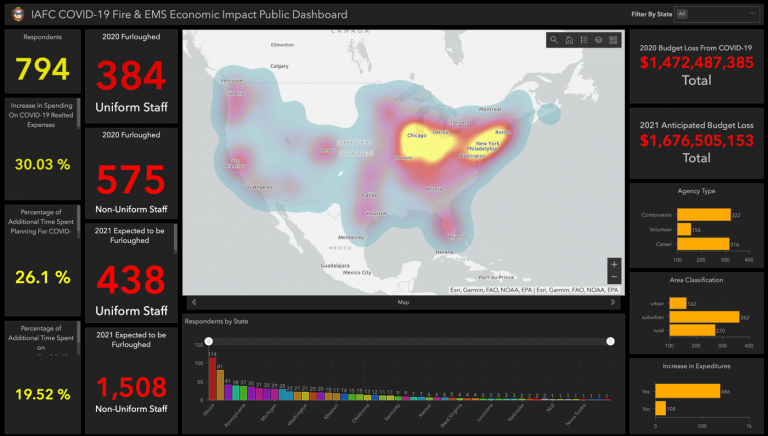

July 7, 2020

Firefighters and emergency medical services personnel, called to help people exposed to COVID-19, initially faced a severe shortage of personal protective equipment (PPE) and health threats due to increased exposure to the virus.
In response, the International Association of Fire Chiefs (IAFC) moved to address these risks and safeguard its members’ physical and mental health. IAFC leadership adopted an emergency outreach strategy and activated a new operational plan, relying on the organization’s strong geographic information system (GIS) technology platform.
“When COVID-19 started breaking, we immediately began collecting data,” said Jeff Dulin, strategic advisor, IAFC National and International Programs. “I knew that if we captured location-based information early, we could show a trend indicating how this outbreak impacts our emergency personnel, budgets, or PPE supply chain shortages.”
By the end of March, as the virus spread across all 50 states, IAFC stood up a command center at its headquarters in Chantilly, Virginia. Dulin and his team used a GIS app, Survey123 for ArcGIS, to send simple web-based forms to IAFC members asking questions about the situation in their region, the supply of PPE, and what inventory was needed. Survey data fed into a shared dashboard, created with ArcGIS Dashboards, to visually communicate PPE assessments.

“We saw indicators of shortages in the supply chain early on,” Dulin said. “The survey data, visualized on our PPE dashboard, helped guide which departments needed help first and connected departments in need with others that could provide help.”
Dulin and his team then used their GIS-based data visualizations to advocate and lobby on behalf of IAFC members.
“The ArcGIS Dashboards gave us the ability to show our congressional reps in Washington brand new data on the critical issues and urgent situation facing the fire and EMS service, which they could then use to help secure new legislation and funding for our members,” Dulin said.
This understanding of where and how much supplies were needed, led the IAFC to form a partnership with Amazon, allowing members to purchase PPE supplies in the Amazon Business COVID-19 Hub.
“We registered 12,000 of our members, who can now purchase PPE at a discount, that otherwise they wouldn’t have access to,” Dulin said. “We then created a new dashboard for that Amazon Business account, to show the number of PPE purchases and the amount of savings that were secured because of it.”
Next, Dulin and his team needed to monitor how the virus was impacting firefighters. They created and deployed a Personnel Impact survey and dashboard with data on how many people had been exposed, diagnosed, or placed into quarantine.
Data from more than 2,250 responses was uploaded and visualized on the corresponding dashboard, providing a valuable snapshot of the force’s operational status.

“The impact survey gives us some really good data about how communicable this virus is to our personnel,” Dulin said. “We can answer some of the critical questions, such as, how the outbreak is going to impact a specific department’s safety or ability to carry out its mission.”
The IAFC with its partnership with Constellis helped them to stand up a Large Order Purchasing Program for COVID Related PPE. Constellis is using the data gathered by the IAFC GIS Tools to identify and support fire departments around the country that have been severely impacted. Constellis is also working with the IAFC on their UCV Sterilization Services and COVID Testing to aid fire departments with cleaning of their apparatus and stations and insuring their employees are not infected. The Data collected helps the IAFC direct Constellis to those departments that are having personnel exposed and need their services.
So far, IAFC has documented more than 1,000 fire or EMS workers who have contracted COVID-19, with more than 5,000 quarantined due to exposure.
Starting in March, loss of revenue in cities and counties across the country was also impacting the budgets of IAFC members. Following the now-familiar pattern, IAFC created and deployed another survey that asked members about budget cuts.

“Members provided us with a current view into their budgets, which allowed us to calculate loss in revenue,” Dulin said. “We were then able to take that attrition data and analyze it on the economic impact dashboard, showing us that about 30,000 firefighters are projected to be laid off as a result of COVID-19.”
IAFC’s government relations team followed the earlier formula of success on Capitol Hill. Armed with powerful insights, presented on visually engaging dashboards interactive reports, they again were able to produce positive results for members.
“We truly believe that the outreach to our members, being able to collect and share this data, has had a big impact on securing funding for the fire service,” Dulin said. “In the first CARES Act—$500 Million for the Fire Grant and $500 Million for the SAFER Grant—went directly to cities to keep their firefighters on the job.”
Learn more about how GIS optimizes Fire, Rescue, and Emergency Medical Services (EMS) response.


